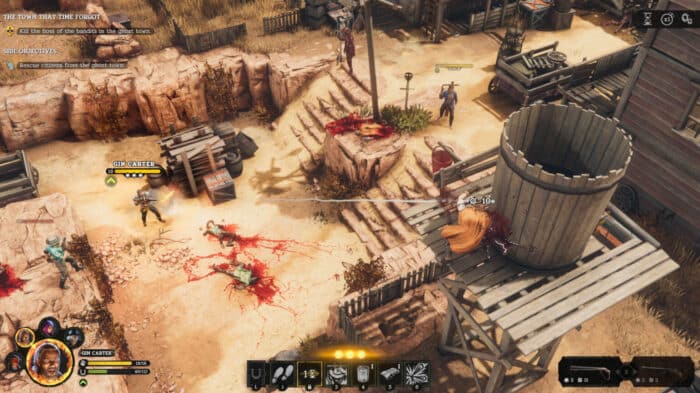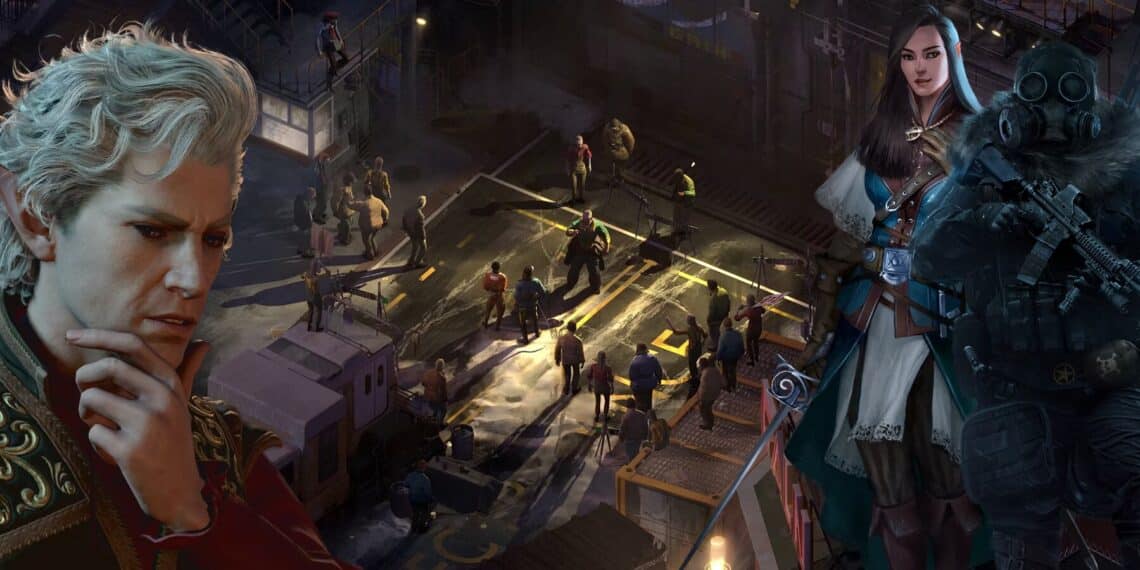In the world of video game development, the isometric CRPG (Computer Role-Playing Game) holds a special place in the hearts of many gamers. With its unique top-down perspective and strategic gameplay, the genre has produced countless classics that have stood the test of time. However, there was a time when the isometric CRPG seemed to fade into obscurity, leaving fans wondering what had happened.

The Role of Seasoned RPG Devs in the Evolution of CRPGs
The evolution of the CRPG genre has always been driven by the passion and creativity of talented developers. Among these developers are the seasoned RPG veterans from two renowned studios, Obsidian Entertainment and BioWare. These developers have not only shaped the isometric CRPG genre but also played a significant role in its temporary demise.
Obsidian Entertainment, founded in 2003 by former Black Isle Studios employees, has been instrumental in the development of CRPGs. With a team consisting of industry veterans who have worked on iconic titles such as Fallout and Planescape: Torment, Obsidian has brought their wealth of experience and expertise to the genre. Their attention to detail, immersive storytelling, and deep character development have set a new standard for CRPGs.
One of the notable contributions of Obsidian Entertainment to the evolution of CRPGs is their emphasis on player choice and consequence. In games like Fallout: New Vegas and Pillars of Eternity, players are presented with a myriad of choices that have far-reaching consequences, creating a truly dynamic and personalized gaming experience. This approach has not only enriched the gameplay but also challenged players to think critically and consider the moral implications of their decisions.
On the other hand, BioWare, founded in 1995, has been a driving force in the CRPG genre with their groundbreaking titles such as Baldur’s Gate and Dragon Age series. BioWare’s strength lies in their ability to create compelling narratives and memorable characters that resonate with players on an emotional level. Their games are known for their intricate storytelling, branching dialogue options, and complex relationships between characters.
One of the key contributions of BioWare to the evolution of CRPGs is their focus on player-driven storytelling. In games like Mass Effect and Knights of the Old Republic, players are given the freedom to shape the narrative through their choices and actions. This interactive storytelling approach has revolutionized the genre, allowing players to feel a sense of agency and ownership over the game world.
However, despite the significant contributions of these seasoned RPG devs, the CRPG genre faced a temporary demise in the early 2000s. With the rise of more mainstream genres and the shift towards console gaming, the demand for isometric CRPGs dwindled. Many developers shifted their focus to other genres, leaving the future of CRPGs uncertain.
During this period, the seasoned RPG devs from Obsidian Entertainment and BioWare faced numerous challenges. They had to adapt to the changing landscape of the gaming industry while staying true to their passion for CRPGs. Some of them ventured into other genres, exploring new creative avenues, while others remained committed to the CRPG genre, determined to revive its popularity.
Fortunately, the resurgence of the CRPG genre came with the advent of crowdfunding platforms like Kickstarter. Obsidian Entertainment successfully crowdfunded their isometric CRPG project, Pillars of Eternity, in 2012, which not only received critical acclaim but also sparked a renewed interest in the genre. BioWare also made a comeback with the release of Dragon Age: Origins in 2009, which was hailed as a return to form for the studio.
Since then, the seasoned RPG devs from Obsidian Entertainment and BioWare have continued to push the boundaries of the CRPG genre. They have embraced new technologies, improved game mechanics, and expanded the scope of their storytelling. With each new release, they strive to deliver immersive and unforgettable experiences that captivate both long-time fans and newcomers to the genre.
The seasoned RPG devs from Obsidian Entertainment and BioWare have played a pivotal role in the evolution of CRPGs. Their passion, creativity, and dedication have shaped the genre, setting new standards for storytelling, player choice, and immersive gameplay. Despite the temporary demise of the genre, these developers persevered and brought about its resurgence, ensuring that CRPGs continue to thrive and captivate players around the world.

Obsidian and BioWare: Pioneers of Isometric CRPGs
Obsidian Entertainment and BioWare are names that hold immense prestige in the world of RPGs. They have garnered acclaim for their work on acclaimed titles such as Baldur’s Gate, Planescape: Torment, and Icewind Dale, to name just a few. These games were instrumental in popularizing the isometric CRPG genre, garnering a devoted fanbase and shaping the expectations of players.
However, despite their successes, both studios faced challenges in keeping the isometric CRPG alive. One of the issues they encountered was the changing tastes of gamers. As the gaming industry evolved, there was a shift in player preferences towards more action-oriented and visually stunning games. This shift had a significant impact on the isometric CRPG genre, causing it to lose its appeal among mainstream gamers.

Unraveling the Mystery of the Temporary Death of Isometric CRPGs
So, what exactly caused the temporary death of the isometric CRPG? According to the seasoned RPG developers, it all comes down to one word: ‘vibe’. As the gaming landscape changed, developers felt pressured to adapt their games to appeal to a broader audience. This led to a shift away from the traditional isometric CRPG formula and a focus on creating more cinematic experiences.
During this transitional phase, many developers tried to reinvent the genre by adding new gameplay mechanics, streamlining the gameplay experience, and incorporating more modern visuals. While these changes were well-intentioned, they often resulted in the loss of what made the isometric CRPGs special: the immersive worlds, complex narratives, and deep role-playing mechanics.
The expanding presence of console gaming also had an impact on the isometric CRPG genre’s wane. The isometric perspective, while a staple on PC, did not adapt as seamlessly to the console environment, causing a decline in genre-specific developments.
Isometric CRPGs: A Nostalgic Journey into the Past
Despite the temporary decline of the isometric CRPG genre, it has made a resurgence in recent years. Thanks to the dedication of both indie developers and established RPG studios, we are now witnessing a renaissance of the genre. Games such as Pillars of Eternity and Divinity: Original Sin have captured the essence of the classic isometric CRPGs while introducing modern innovations.
For fans of the genre, these games offer a nostalgic journey back in time, reminding us of the incredible experiences we had exploring vibrant worlds, engaging in deep conversations with memorable characters, and making impactful choices that shaped our virtual personas.
The temporary death of the isometric CRPG genre can be attributed to the changing tastes of gamers and the pressure faced by seasoned RPG developers to adapt their games to appeal to a broader audience. However, thanks to the passion and dedication of developers, the genre has been revitalized, allowing us to once again embark on thrilling adventures in richly detailed worlds.
Disclaimer: All images are copyright of their respective owners and are used by Hablamos De Gamers for informational purposes only.























